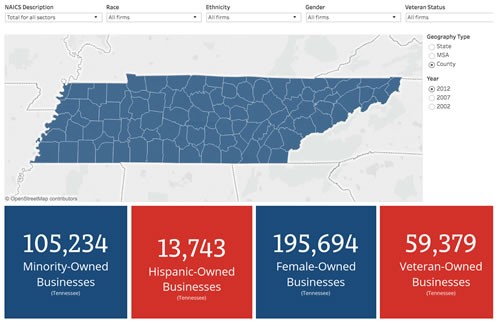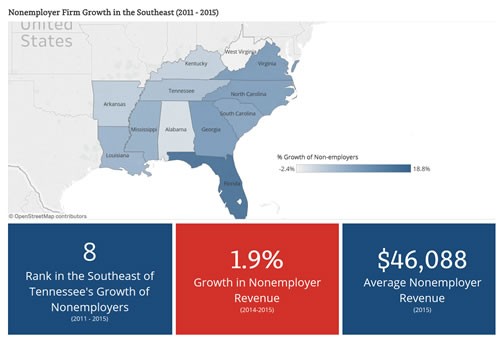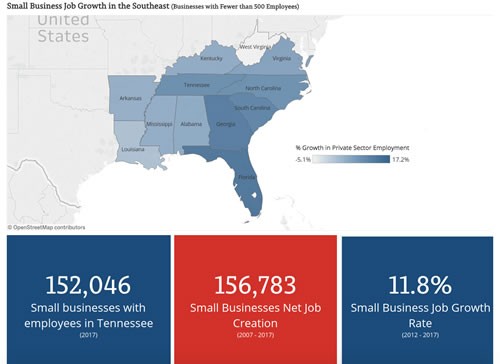Business Data
Business by the Numbers: Dashboards for small business and entrepreneurs in Tennessee
Dive into data about Tennessee’s business landscape. These dashboards let you explore:
- Businesses with employees (and how many)
- Employee-free businesses (sole proprietors, independent contractors)
- Business ownership by race, ethnicity, gender and veteran status
Plus, you can customize your view by filtering on industry (NAICS codes) and geographic region to pinpoint trends that matter to you.
📌 Note: Each dashboard pulls from the latest available data sources. Some updates may lag behind others depending on source timing, but all dashboards refresh automatically as underlying data is updated.
Profiles of Small and Underutilized Businesses
You can access detailed data about business owners’ race, ethnicity, gender, and veteran status—covering both employer and nonemployer businesses. These profiles help reveal who is starting and running businesses across the U.S. The data can be further broken down by (1) Industry (via NAICS codes) and (2) Geographic region (state, county, metro areas, etc.).
This multi-layered view allows you to compare, for instance, how women-owned firms in manufacturing differ from veteran-owned firms in professional services across different states.
Understanding Nonemployer Businesses
Nonemployer businesses are those with no paid employees, annual receipts of $1,000 or more, and federal income tax obligations. They’re most often operated by self-employed individuals or general partnerships.
Although they represent the majority of U.S. business establishments, nonemployers are typically excluded from
federal employment statistics because they do not create traditional wage-based jobs. Still, they play a vital role in local economies, fueling entrepreneurship, innovation, and independent growth.
Understanding Small Business Employment
Explore data on employment trends within Tennessee’s small businesses, including job growth, industry breakdowns, and the ages of these firms.
This dashboard focuses exclusively on private-sector employers—so it excludes nonemployer businesses as well as government or public-sector organizations.


